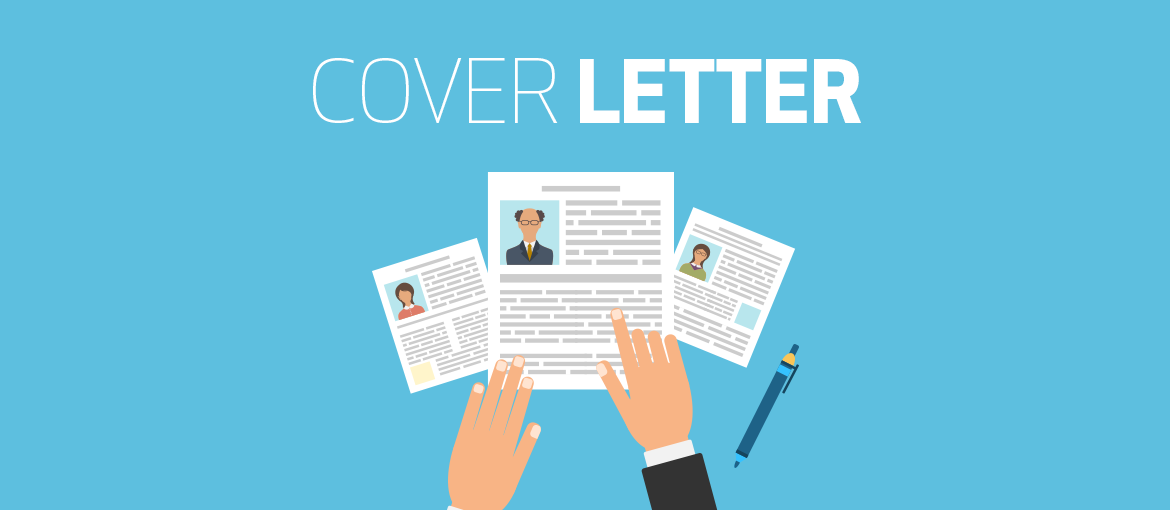“Send CV and cover letter”. Faced with having to write a cover letter for a job application, many decide not to apply; others have a go, but do a poor job; few write a letter worthy of note. This article is aimed at those who want to play their cards right by writing an effective cover letter. We explain how to structure a cover letter, the pitfalls to avoid and how to approach content and design to make a great impression.
How to structure a generic cover letter
Let’s start with a frequently asked question: what’s the difference between a cover letter and a motivation letter? A cover letter accompanies your CV and fleshes out the skills and experience listed on it; a motivation letter, on the other hand, explains why you want to work for the company.
In this post, we explain what a generic cover letter contains and how it’s structured:
- All your personal details should be given here: first name, surname, address, email address, phone number, website (if you have one) and social media contacts (if you use them for work). Don’t forget to date the letter.
- First paragraph. Introduce yourself and talk about your education and experience. Don’t mention everything, only what seems most relevant to your application. For each work experience, specify how it helped you grow professionally: it’s a way of highlighting your skills.
- Second paragraph. Explain why you want to work for that company and, if it’s a cover letter for a speculative application, specify the position you’d be interested in and why.
- Closing the letter. Be nice, thank the reader for their time, end with an appropriate valediction and sign.
Tips for a perfect cover letter
Keep in mind that whoever reads your cover letter will be reading dozens and dozens of others. To stand out, you need to showcase your personality and emphasise the care you take in presenting yourself, which will give your potential employer an idea of the care you take in your work. Next up: our writing and design tips.
Here are six writing tips to ensure you don’t sound boring, bring out your personality and avoid sloppiness:
- Be concise. It’s unlikely that a letter over a page long will be read all the way through.
- Don’t send an impersonal letter. Avoid empty and generic phrases like: “I would like to work for your company because I believe it is a leader in the industry”. This bland sentence could apply to any company.
- Keep things formal, but not overly so. Avoid phrases that create distance, such as “Dear Sir or Madam”. The letter should be more direct and personal.
- Let you personality shine through, explain why you want the job and show enthusiasm. That way, you’ll come across as a person, and yours won’t be just one of hundreds of similar letters.
- Typos and grammatical errors leave a poor impression. Carefully re-read your letter. If writing in a foreign language, have a native speaker read it over.
- Don’t send your cover letter using an email address that doesn’t sound very professional and, above all, send the letter to the right person!
Six design tips. Pay careful attention to your cover letter’s graphic design, otherwise few will stop to read it. So:
- Choose the right font. It should be easy to read and convey professionalism. To improve readability, we recommend using a sans serif font. Don’t use calligraphy fonts or fun or informal typefaces. In other words: if you want your cover letter to be taken seriously, don’t write it in Comic Sans.
- The body of the text. For readability’s sake, we advise against using a font size smaller than 12.
- Colours aren’t necessary, go for understatement.
- Use wide margins to give the text an airy, elegant appearance. Watch out for line spacing: too little will make the text difficult to read.
- Don’t write large blocks of text that put off the reader. Divide the letter into paragraphs. This will ensure your words are read and understood more easily.
- If you’re sending a physical letter, use the same paper for the CV and cover letter. Mismatched paper = sloppy.
6 + 6 = 12 tips to remember, to make sure you make a great impression with your cover letter. Now all that’s left is to wish you the best of luck!

